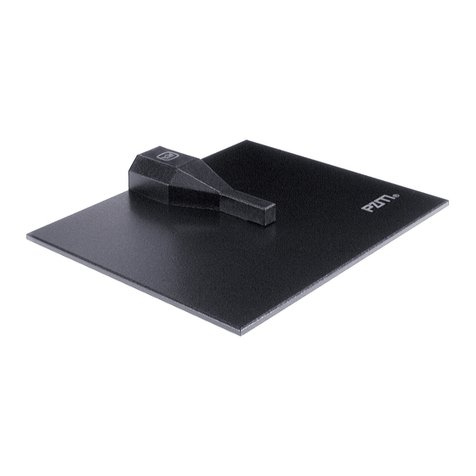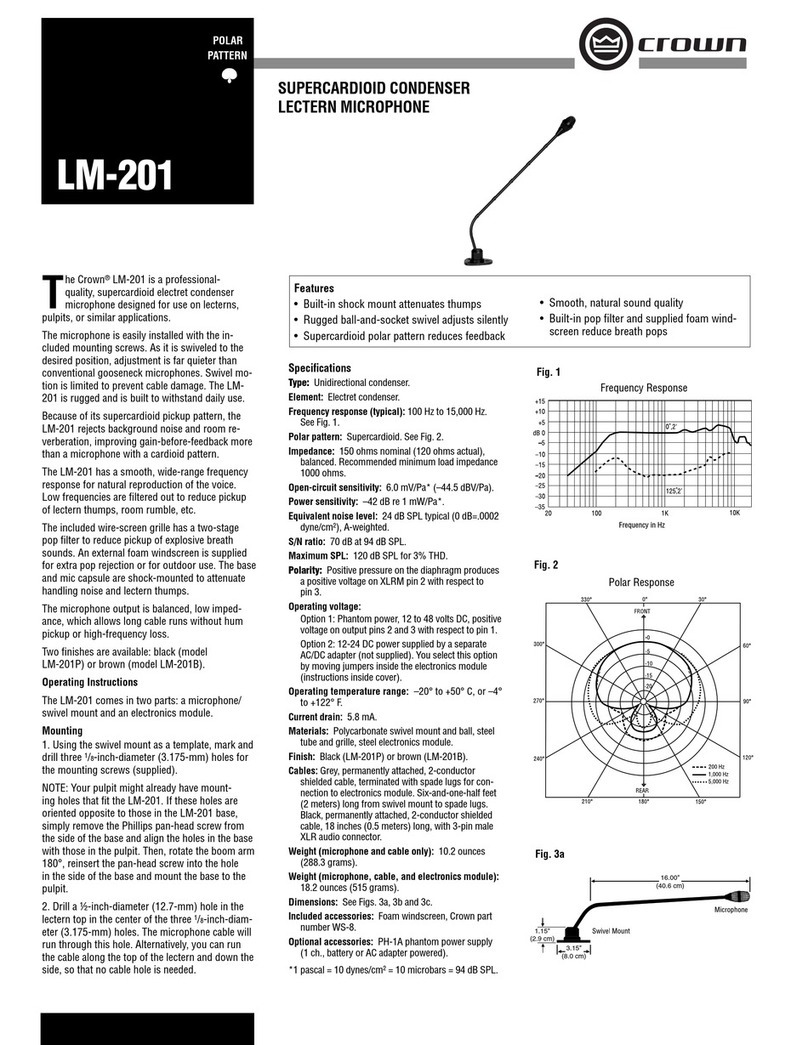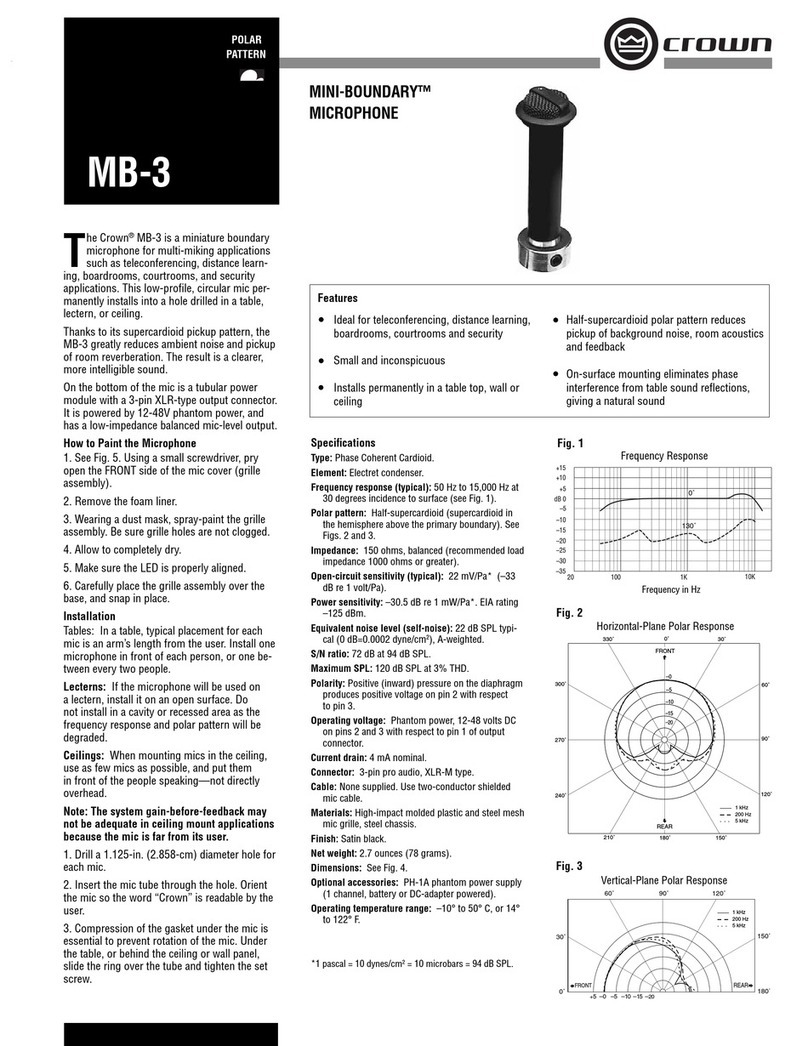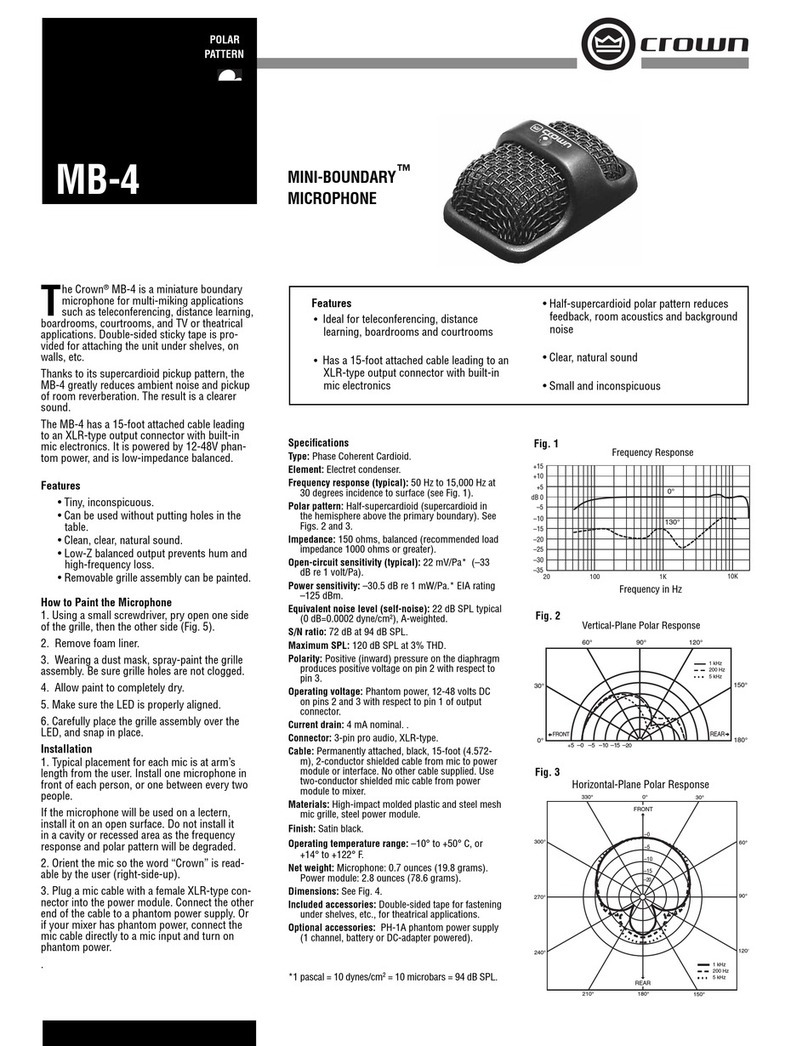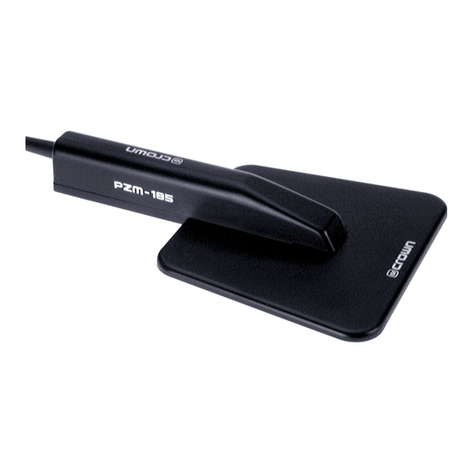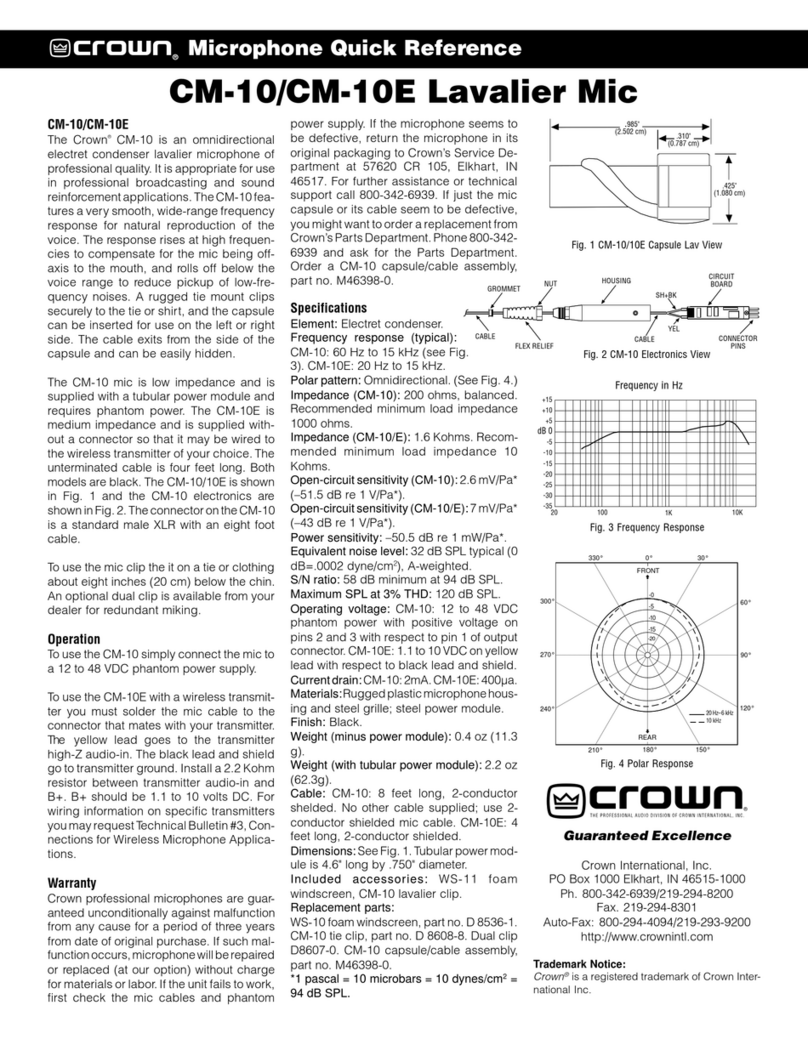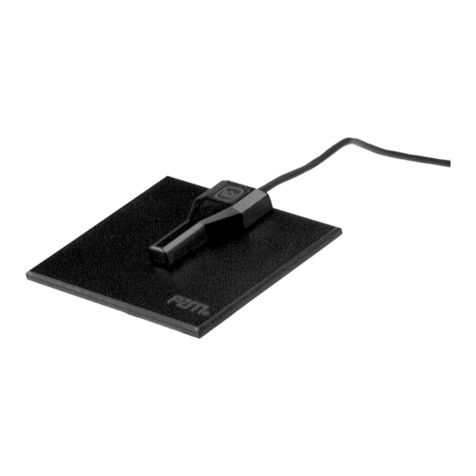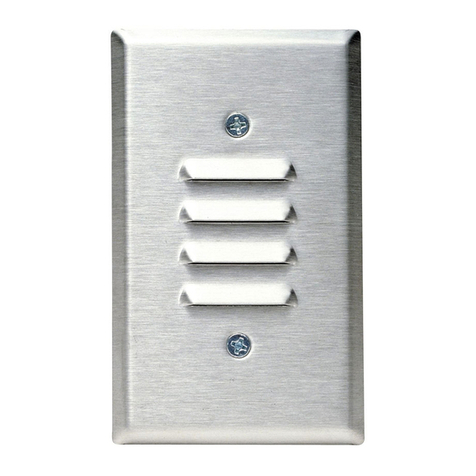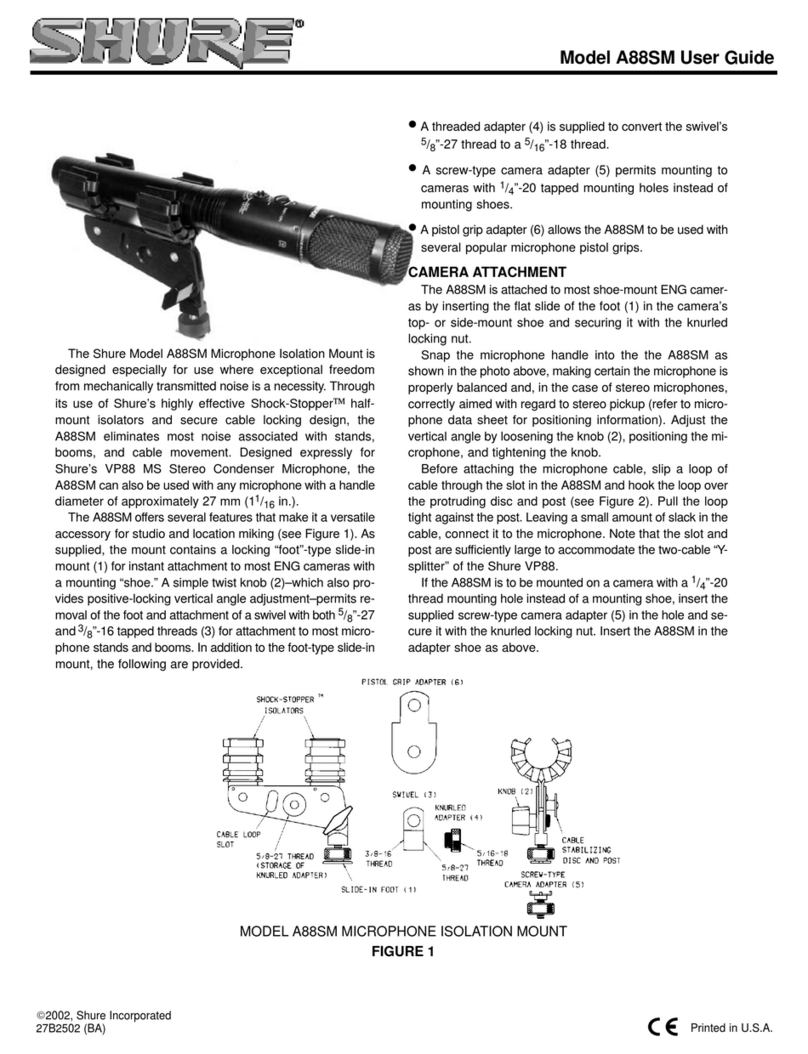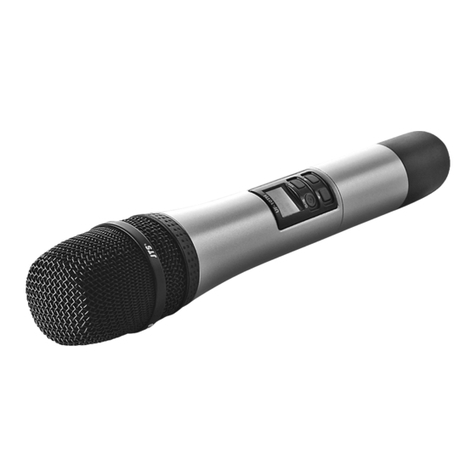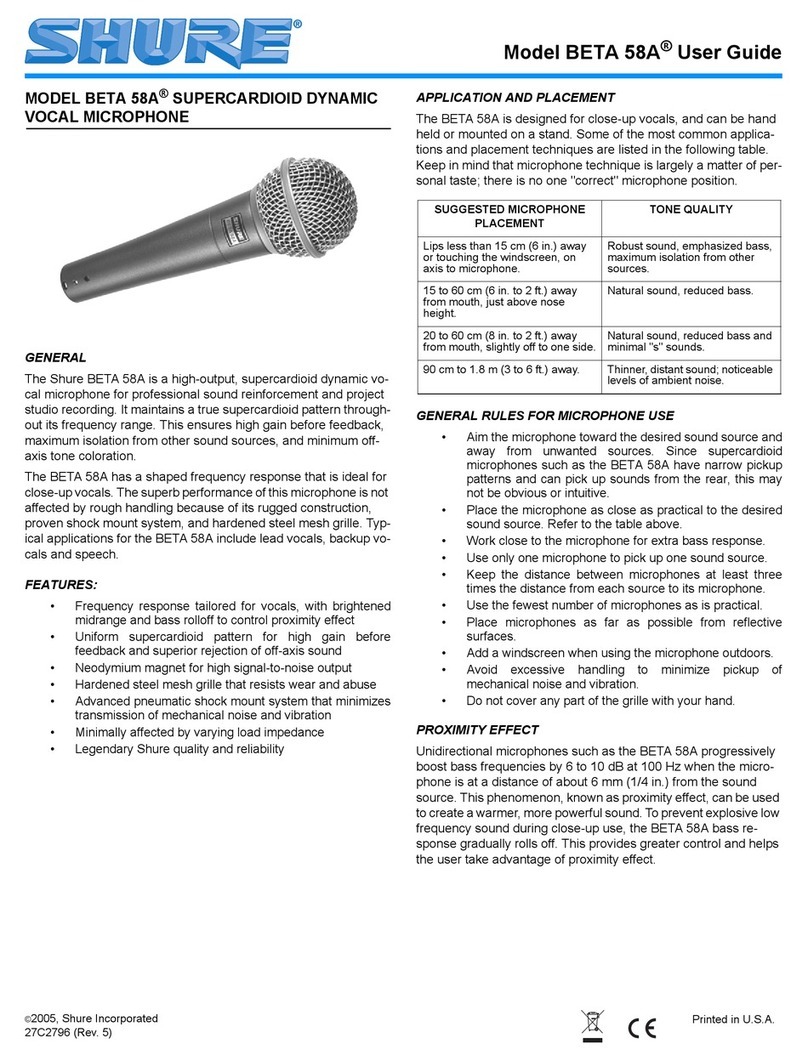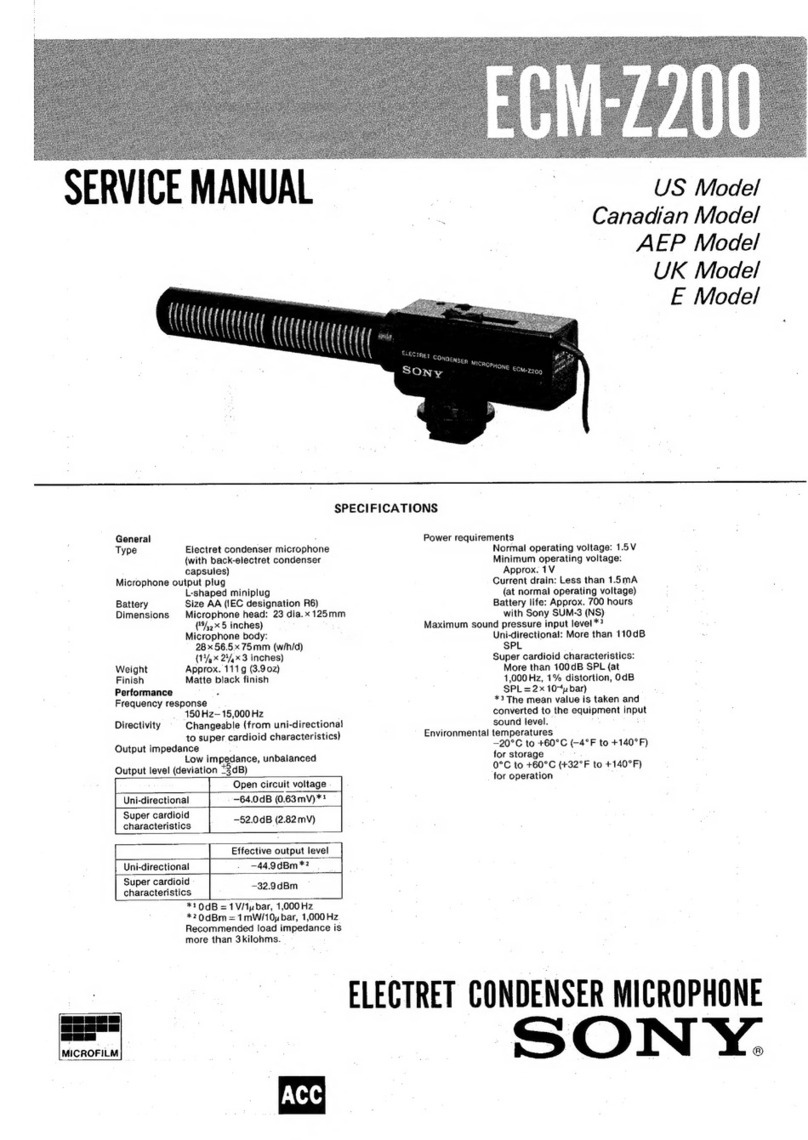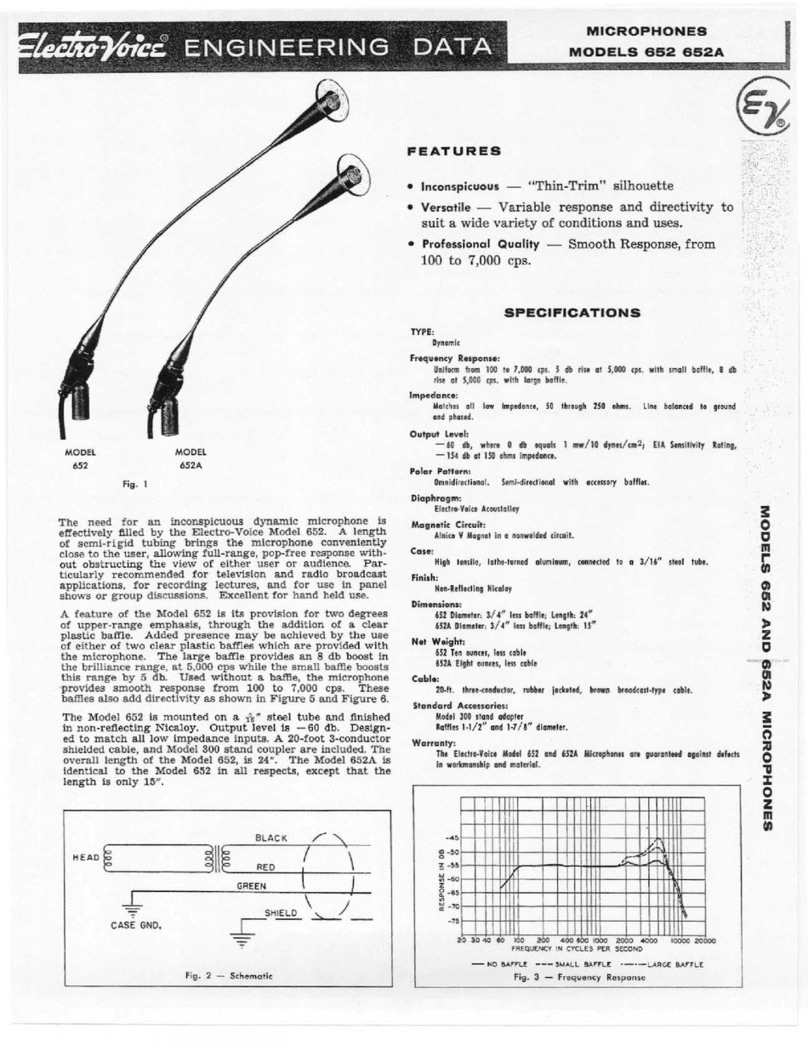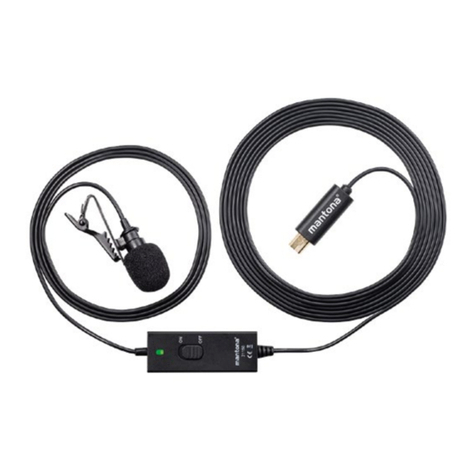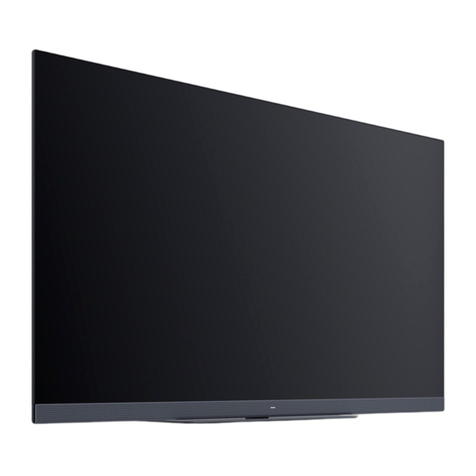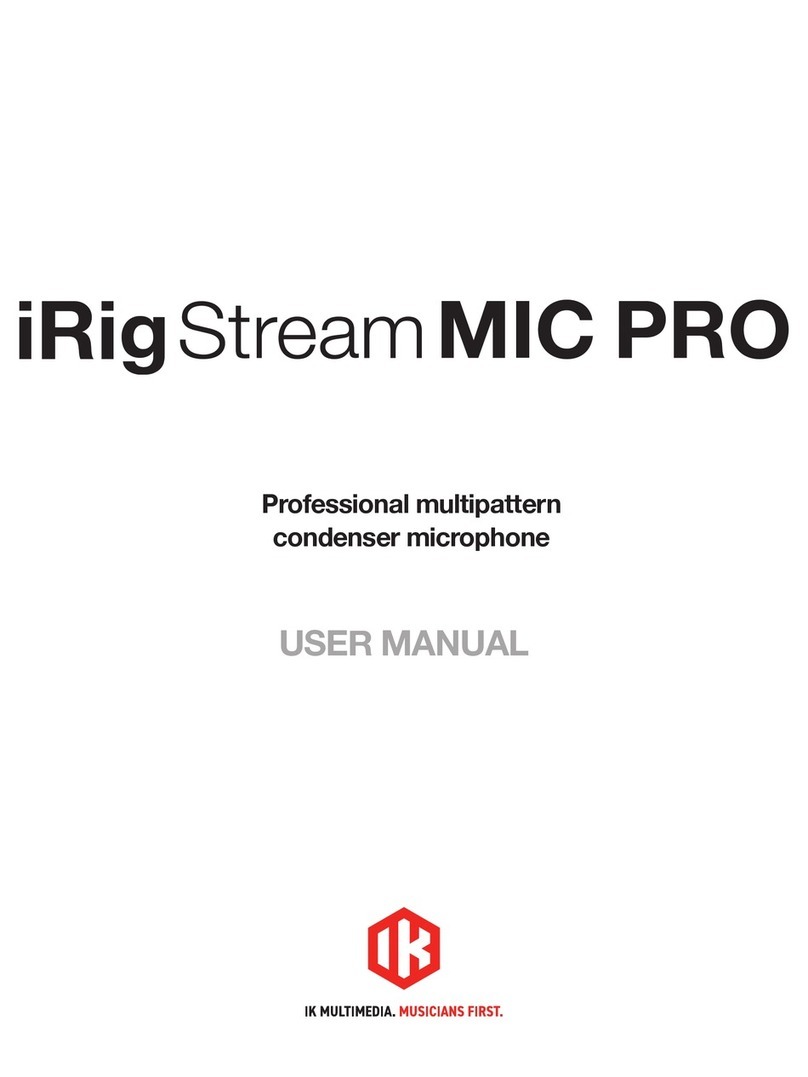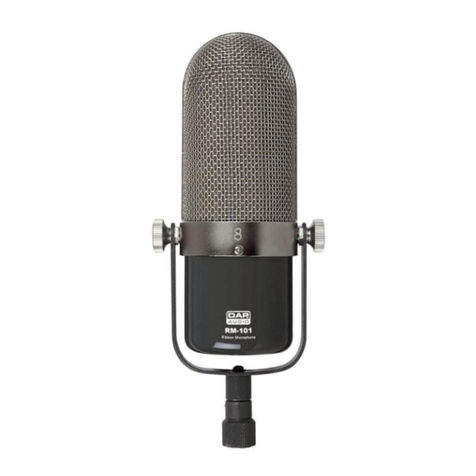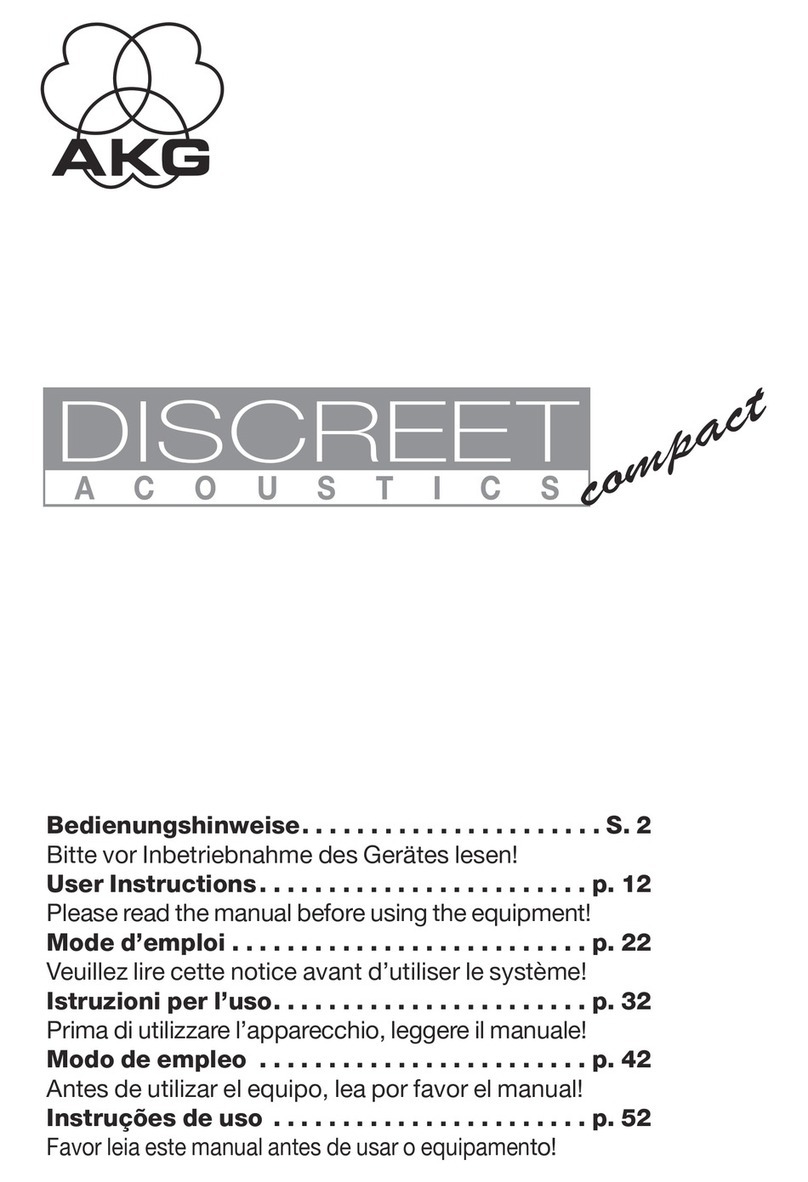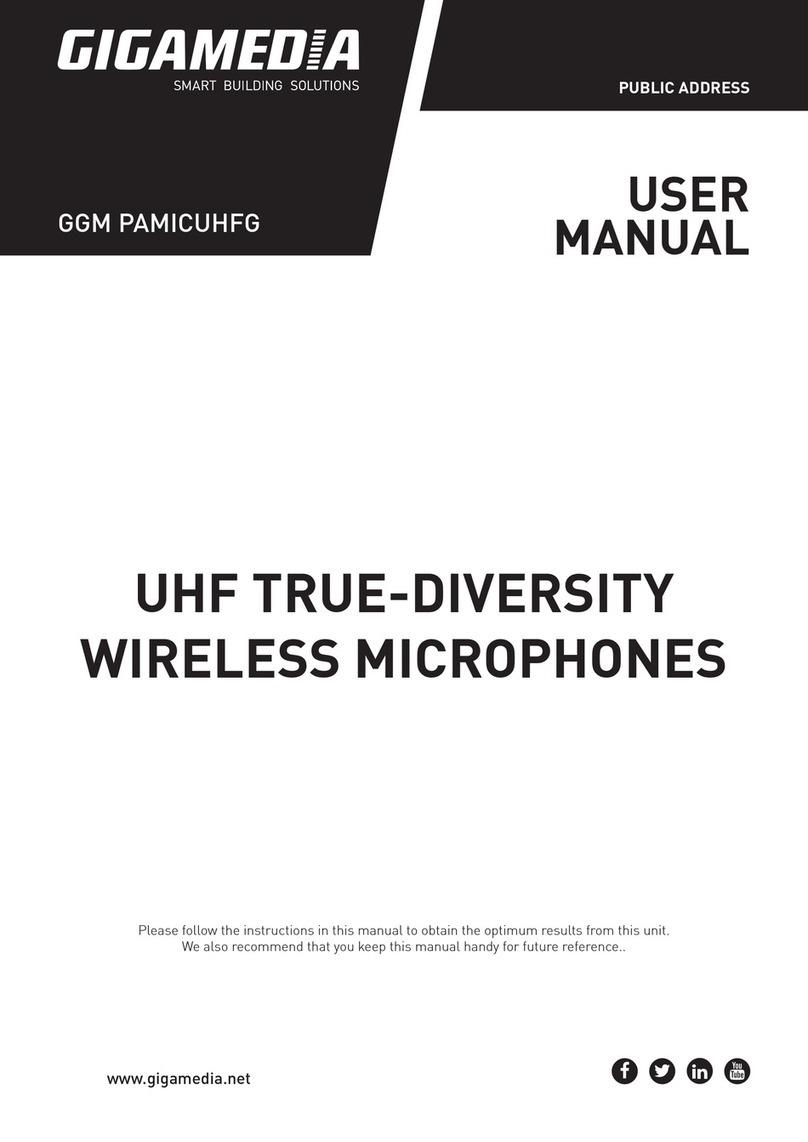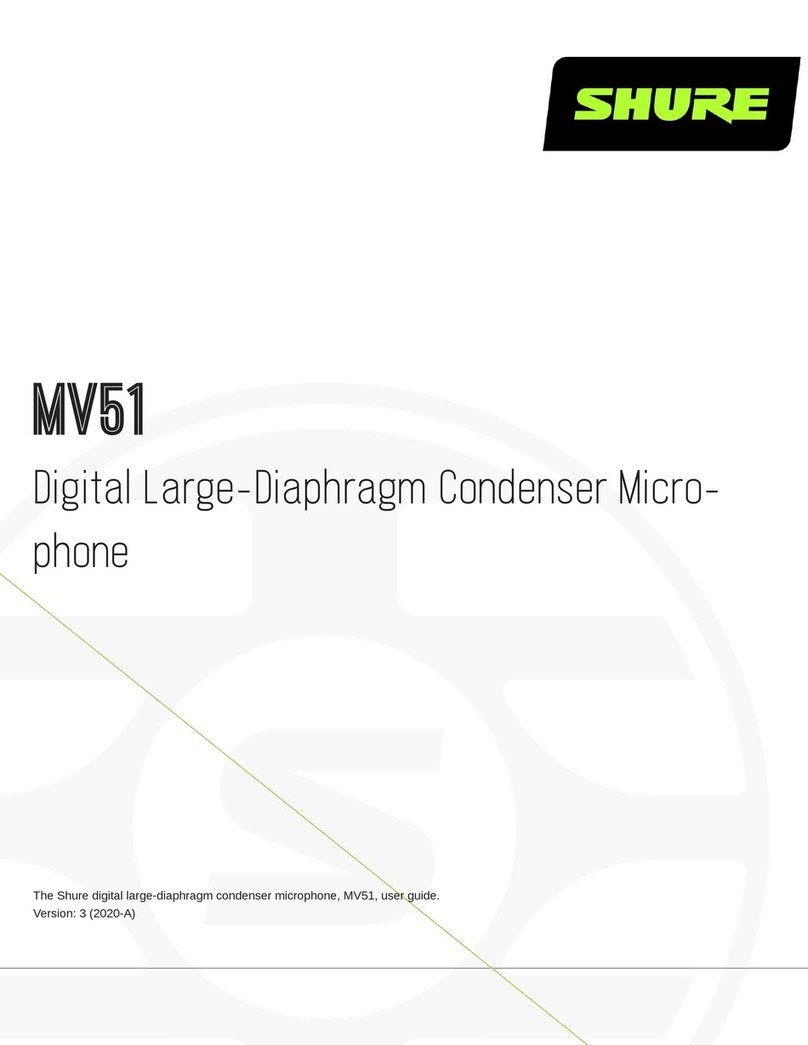
©2005 by Crown Audio, Inc.
1718 W. Mishawaka Rd., Elkhart, Indiana 46517-9439 USA
Tel: 574-294-8000
136366-2 2/05
Crown, PCC, Phase Coherent Cardioid and PZM
are registered trademarks of Crown International
The Crown®PHASE COHERENT CARDIOID®(PCC®) Microphone
THE PROBLEM
Microphones often must be placed near hard reflective surfaces. Two situations
where this occurs are (1) picking up drama or opera with microphones near the
stage floor, and (2) picking up participants at a conference with microphones on
desk stands on the conference table.
In these situations, sound travels from the sound source to the microphone
via two paths: directly from the source to the microphone, and reflected off
the surface (Figure 1, left). Note that the reflected sound travels a longer
distance than the direct sound, so the reflected sound is delayed relative to the
direct sound. When the direct and delayed sounds combine at the microphone
diaphragm, this results in phase cancellations of various frequencies. A series
of peaks and dips is created in the net frequency response. This is called a
comb-filter effect. It colors the tone quality and gives an unnatural sound.
In trying to solve this problem, you might lay a conventional microphone on the
surface. But the diaphragm of such a mic is relatively large. Sound reflections
travel a slightly longer path to the center of the diaphragm than the direct
sound. Direct and delayed sound combine at the diaphragm and cancel high
frequencies. The result is a dull sound.
Tech Made Simple
THE PCC SOLUTION
A new kind of microphone was invented to solve the problem of phase interfer-
ence from surface reflections: the Phase Coherent Cardioid or PCC.
In the Crown PCC, the microphone diaphragm is small enough so that any
phase cancellations are above the audible range (Fig. 1, right). This results in a
wide, smooth frequency response free of phase interference.
Unlike the Crown PZM® which uses an omnidirectional mic capsule facing
down, the PCC uses a supercardioid mic capsule facing horizontally across
the surface. Its directional polar pattern improves gain-before-feedback, reduces
unwanted room noise and acoustics, and rejects sound from the rear.
Fig. 2 shows the difference in construction and polar patterns of the PZM and
PCC.
Typical applications for PCCs are:
• Area pickup of drama and musicals (PCC-160 used on the stage floor)
• Conferences, videoconferences, boardroom (PCC-170 series, PCC-130
series, or MB series on the conference table)
PCC BENEFITS
• Eliminates phase cancellations, giving a clear, natural sound.
• Supercardioid polar pattern reduces feedback and room acoustics.
• 6 dB higher sensitivity and 6 dB better signal-to-noise ratio (improved
“reach”).
• Unchanging tone quality as the sound source moves.
• Lack of off-axis coloration.
• Small size, inconspicuous.
TO LEARN MORE
Go to www.crownaudio.com and click on Microphones. Then click on Document
Library. Look under Microphone Application Guides to find the
Crown Boundary Microphone Application Guide.
Figure 2. PZM polar pattern (top) vs. PCC polar pattern (bottom)
Figure 1. Conventional microphone (left) vs. PCC (right)
SOUND
SOURCE
DIRECT SOUND
MIC
REFLECTED
SOUND
SURFACE
RESULTING FREQUENCY RESPONSE
dB
FREQUENCY
DIRECT SOUND
SOUND
SOURCE
REFLECTED
SOUND
RESULTING FREQUENCY RESPONSE
dB
FREQUENCY
PCC MIC
CAPSULE
MIC CAPSULE
MIC CAPSULE
PZM POLAR PATTERN (SIDE VIEW)
PCC POLAR PATTERN (SIDE VIEW)
FRONT



